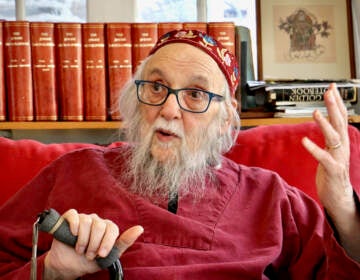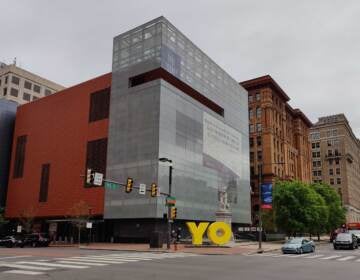Celebrating ‘Notorious’ Ruth Bader Ginsburg at Philly Jewish museum
Philadelphia’s museum of American Jewish History opens an exhibition about the life of Ruth Bader Ginsburg.
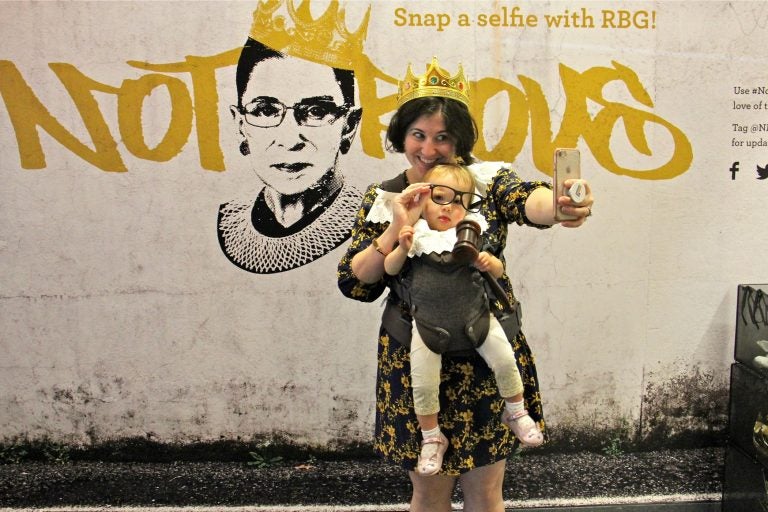
Sarah Maiellano of Philadelphia takes a selfie with her daughter, Chloe, at the "Notorious RBG" exhibit at the National Museum of American Jewish History. (Emma Lee/WHYY)
Supreme Court Justice Ruth Bader Ginsburg has always had a presence at the National Museum of American Jewish History in Philadelphia.
Since the opening in 2010, it’s permanent, core exhibition showing the long sweep of Jewish life in America has featured a small photo of Ginsburg as a girl at Jewish summer camp. A video of an older Ginsburg extolling the contributions of Justice Louis Brandeis and the power of his dissenting opinions.
That video of Ginsburg was shot before she, herself, became the queen of dissent.
“When we filmed RBG talking about the power of dissent, this was 2009-ish,” said NMAJH chief curator Josh Perelman. “It’s a testament to her life-long belief in speaking the truth and advocating on behalf of all Americans.”
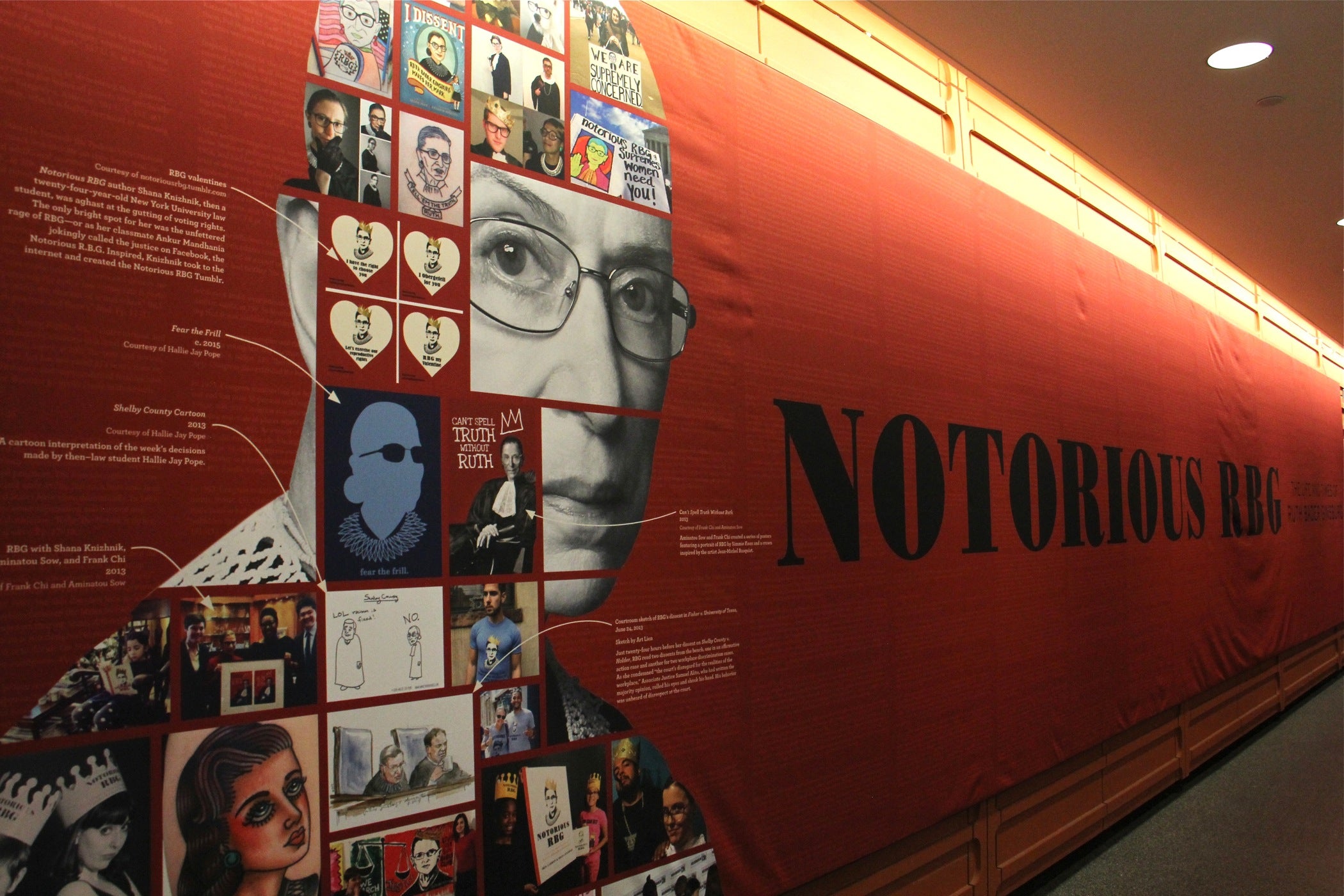
It was not until 2013 when Ginsburg was crowned “Notorious RBG” for her own dissenting opinions. When parts of the Voting Rights Act were disassembled, she pushed back against the majority opinion that those rights need not be protected because racism is no longer prevalent in America. Ginsburg wrote it’s like “throwing away your umbrella in a rainstorm because you are not getting wet.”
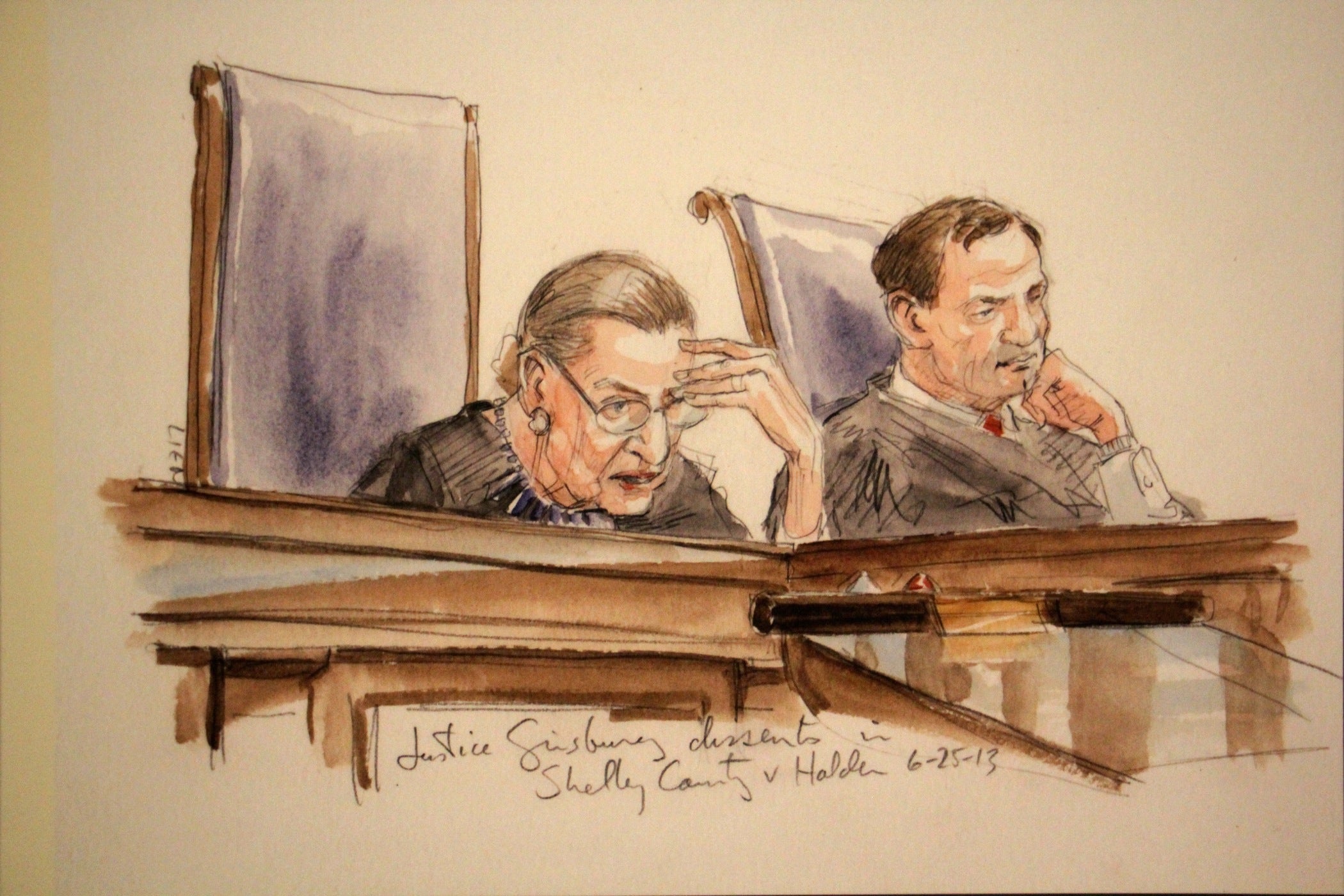
Ginsburg wrote those words on June 25, 2013, prodding Shana Knizhnik to immediately launch a blog about the justice. At the time a law student herself, Philadelphia native Knizhnik gave the blog a tone of half legalese fangirl, half pop culture whimsy, comparing the petite, elderly Jewish justice with the 300+ pound, African-American rapper, Notorious B.I.G. (killed in 1997).
That blog became a best-selling book, co-authored by Irin Carmon, and now an exhibition. “Notorious RBG.” It was created by the Skirball Museum in Los Angeles and opens this weekend at the NMAJH.
It’s a chronological show taking visitors from her Brooklyn upbringing, her marriage to Martin Ginsburg, studying law at Harvard and Columbia, and struggling to enter the law field upon graduation.
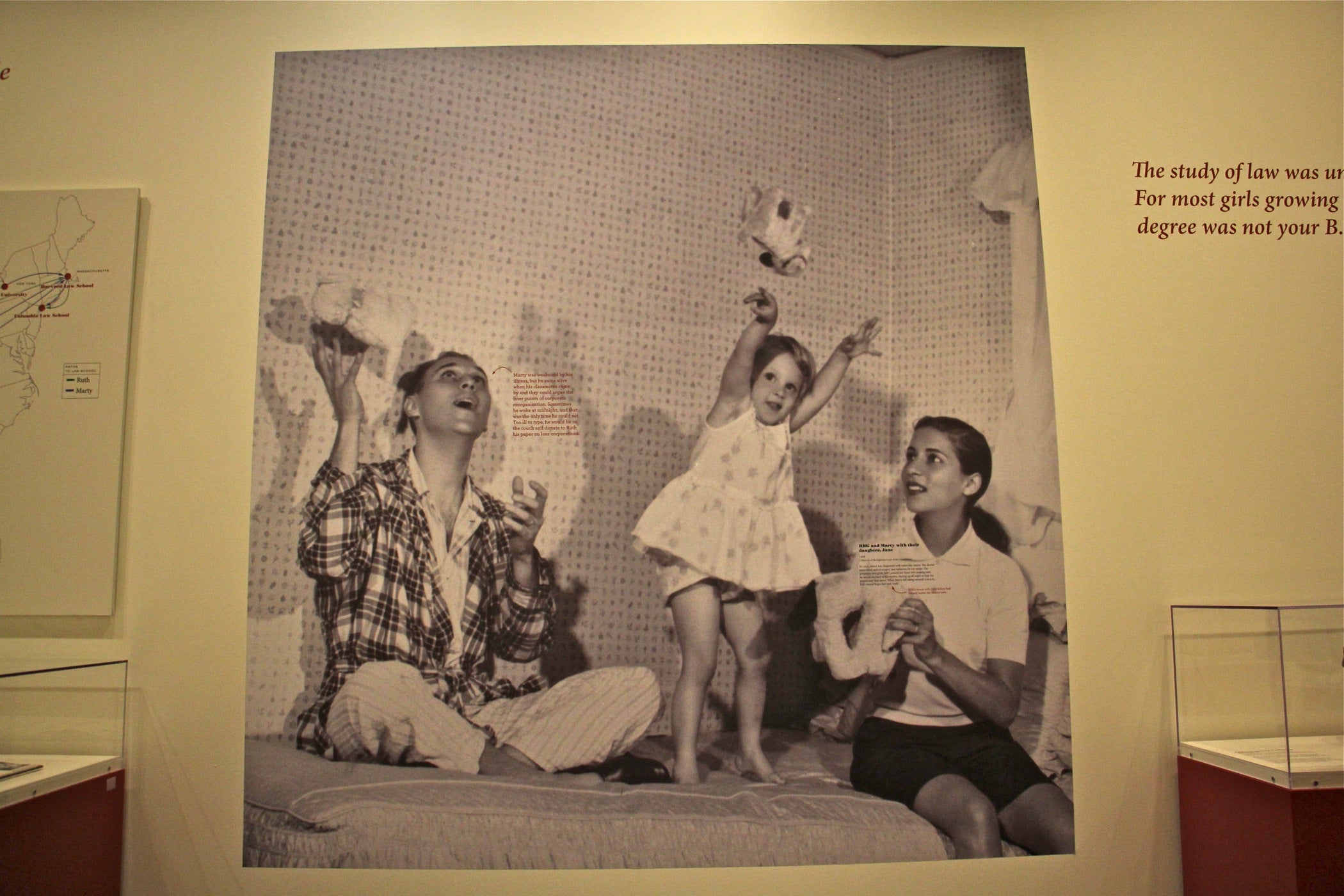
“In the first part of her life when she was experiencing adversity for being, in her words, ‘a woman, a mother, and a Jew,’ she didn’t question it at first,” said Knizhnik. “It took her students who were pushing for a better world for her to realize that what happened to her was part of a larger system that disadvantaged women.”
The exhibition makes the point that Ginsburg was not born “notorious,” but rather built that way. She was raised by a mother who insisted she be educated. She married a man in the 1950s who did not insist on the strict gender roles of that era: they decided to attend Harvard Law together. She was inspired by the legal thinking of lawyer and civil rights activist Pauli Murray, who advocated the 14th Amendment guaranteeing rights of citizenship be applied to gender rights.
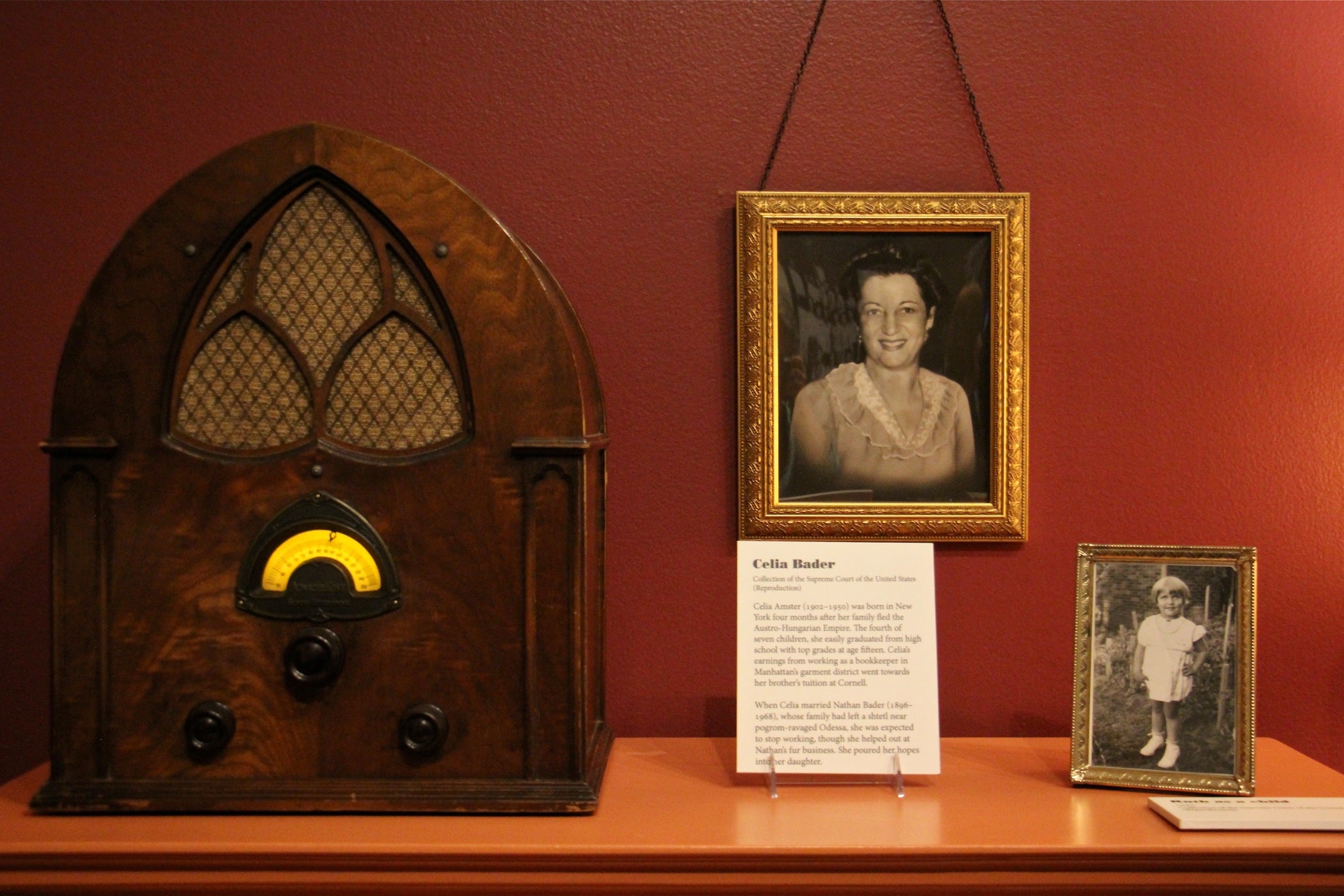
Ginsburg was born in an era when women were not allowed to sit on juries in some states and grew up to be the second woman seated at the Supreme Court and the first Jewish woman, making her a hero to liberals and Jews.
“She is a very small woman, very traditionally feminine. That is not celebrated as the heroes of movements,” said Knizhnik. “That’s something so incredible and inspiring: she was always 100 percent herself.”
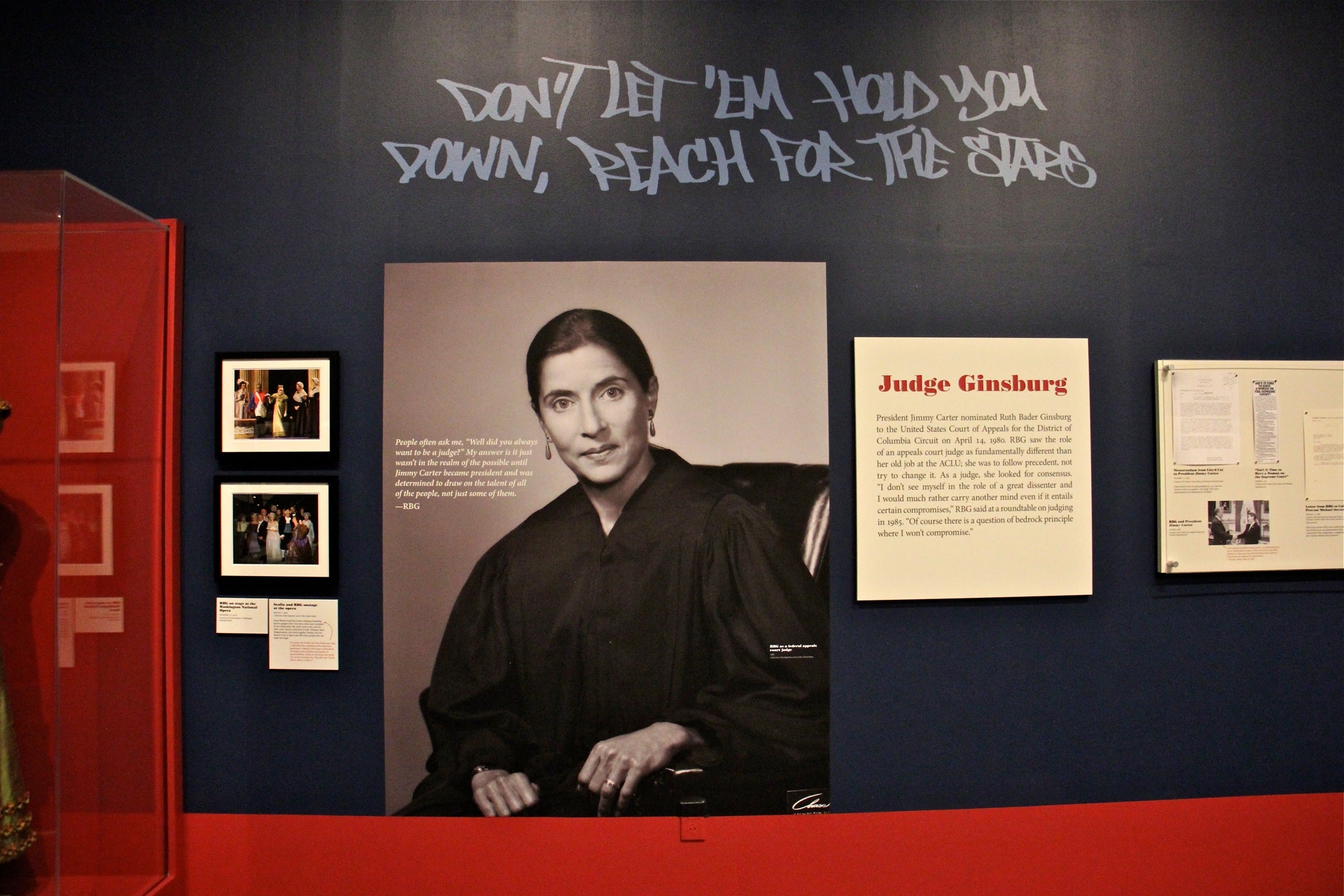
The exhibition is long on text. Large posters summarize some of the landmark cases Ginsburg argued as a lawyer to advance women’s rights, and later decided as a Supreme Court Justice. Despite the playful presentation of marginal asides and graffiti graphics, it’s a lot to read.
Clothes break up the information. Ginsburg was never accused of being a flamboyant dresser. Sartorially conservative, she prefers plain clothes and her hair in a tight bun.
Nevertheless, she was keenly aware of the power of clothes. Ginsburg likes to wear a jabot over her judicial robe — a lace collar that can look like a bib or a necklace, depending on the style. She used jabot and jewelry on any given appearance to communicate her legal standing on certain decisions.
The exhibition makes the most of Ginsburg’s subtle fashion signals. It opens with a gallery wall covered in a lace pattern, with one of the Justice’s black robes and jabots behind glass.
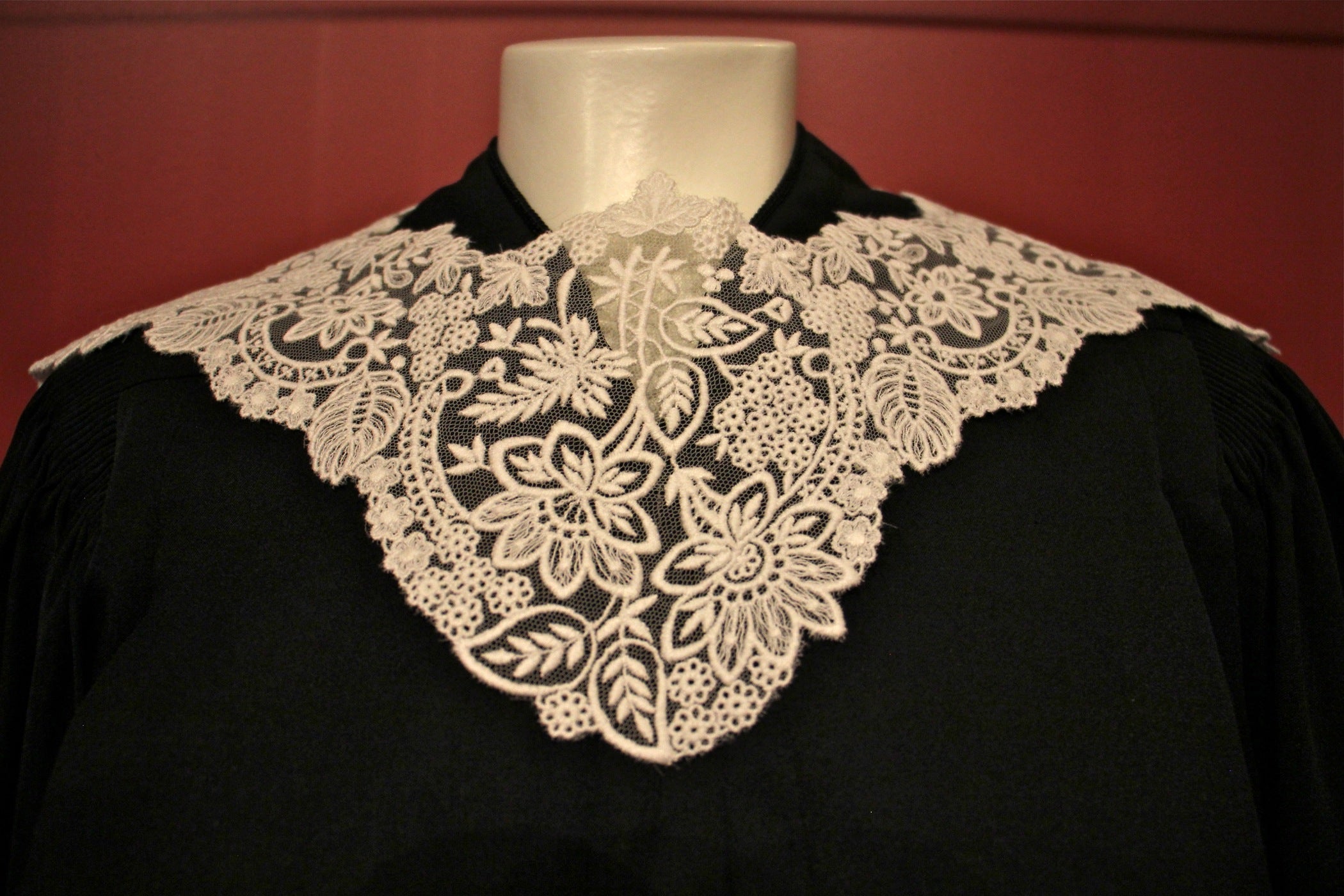
After several rooms explain Ginsburg’s work to liberate women from oppressive social and professional traditions, it ends on a curious note: in a kitchen. A mock-up of a small cooking area, complete with utensils concludes the show.
Ginsburg, it turns out, was an unenthusiastic cook. Fortunately, she married a man more comfortable in the kitchen.
“The kitchen was something where she never was,” said Carmon. “Her husband Marty was the cook in the family. She hasn’t cooked a meal since 1980.”
Martin Ginsburg, a professor of law at Georgetown University, was the one who remembered the birthdays of his wife’s clerical staff, baking a cake for each occasion. His personal whisk is on display, under glass.
After his death in 2010, the spouses of other Supreme Court Justices published a cookbook, “A Chef Supreme,” in his honor.
“She had a marriage that defied stereotypes. She believed that if you changed the culture and changed the understanding of the law, everyone would have a chance to be themselves,” said Carmon. “Dissenting furiously when you need to and also believing the world could be better is part of the message of the exhibition.”
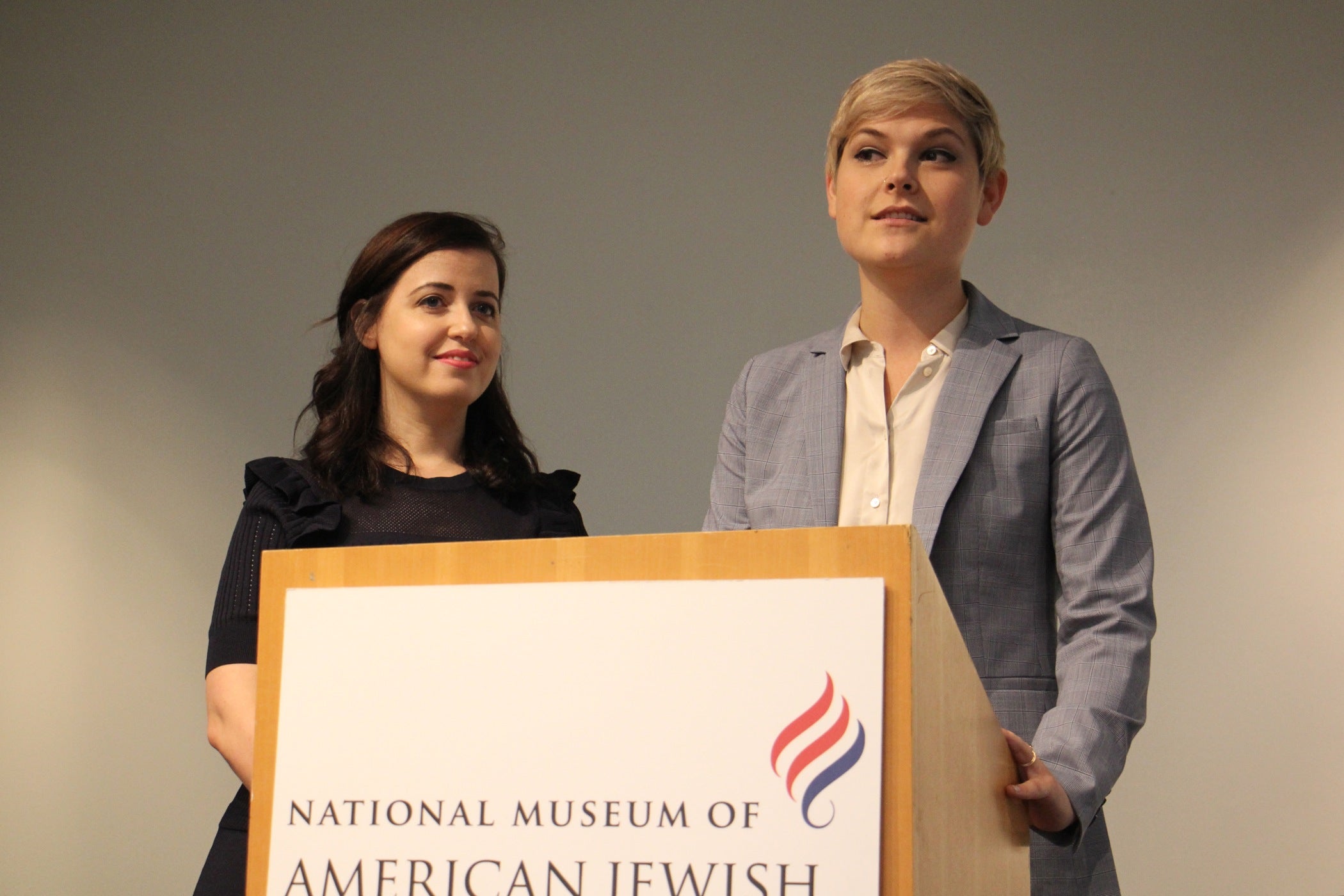
According to museum officials, Ginsburg is a member of the NMAJH and has visited in the past. Curator Perelman personally gave the justice a tour of the core exhibition — admitting it was one of the more nerve-wracking tours he had ever given of the exhibition he himself created. He said Ginsburg turned the tables and informed him about many of its artifacts.
Due to SCOTUS obligations and her own health concerns, she was not able to attend “Notorious RBG” when it debuted in Los Angeles a year ago.
Will she attend the only East Coast stop of her own show? NMAJH staff are not certain.
WHYY is your source for fact-based, in-depth journalism and information. As a nonprofit organization, we rely on financial support from readers like you. Please give today.



